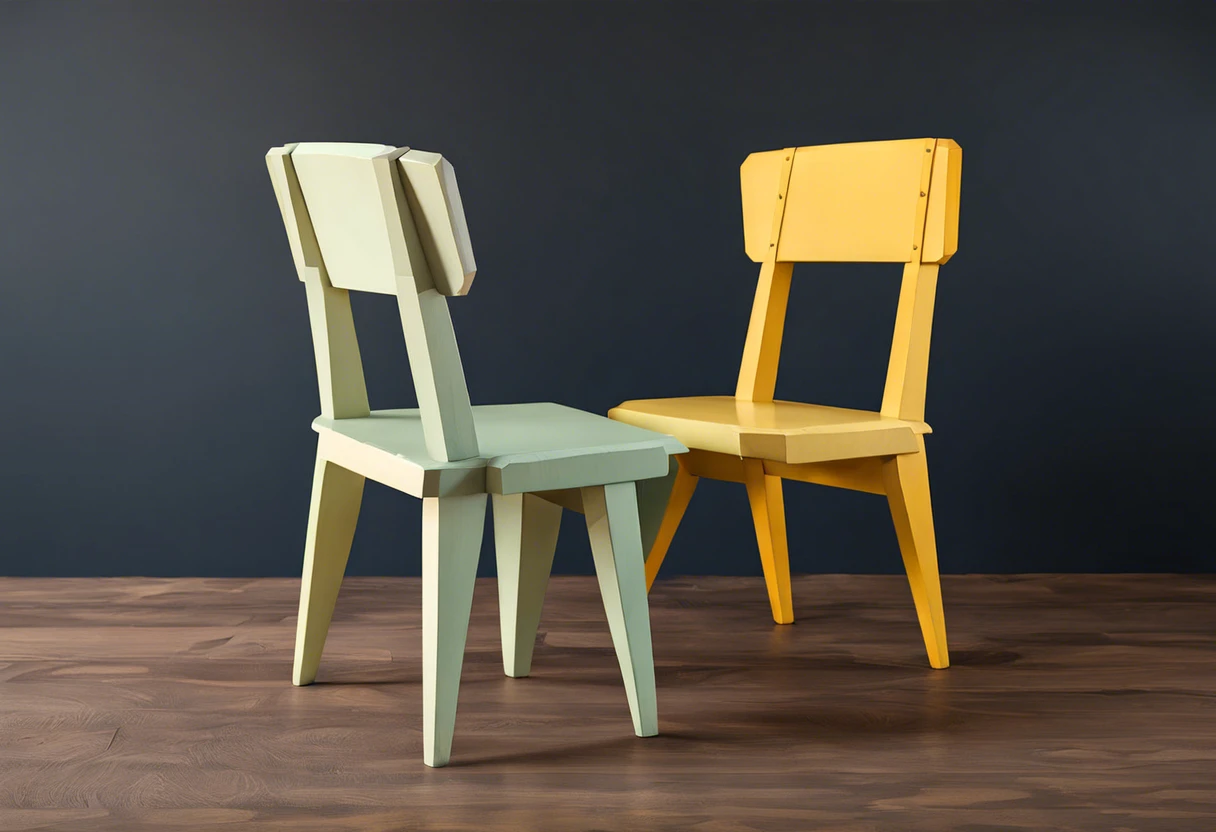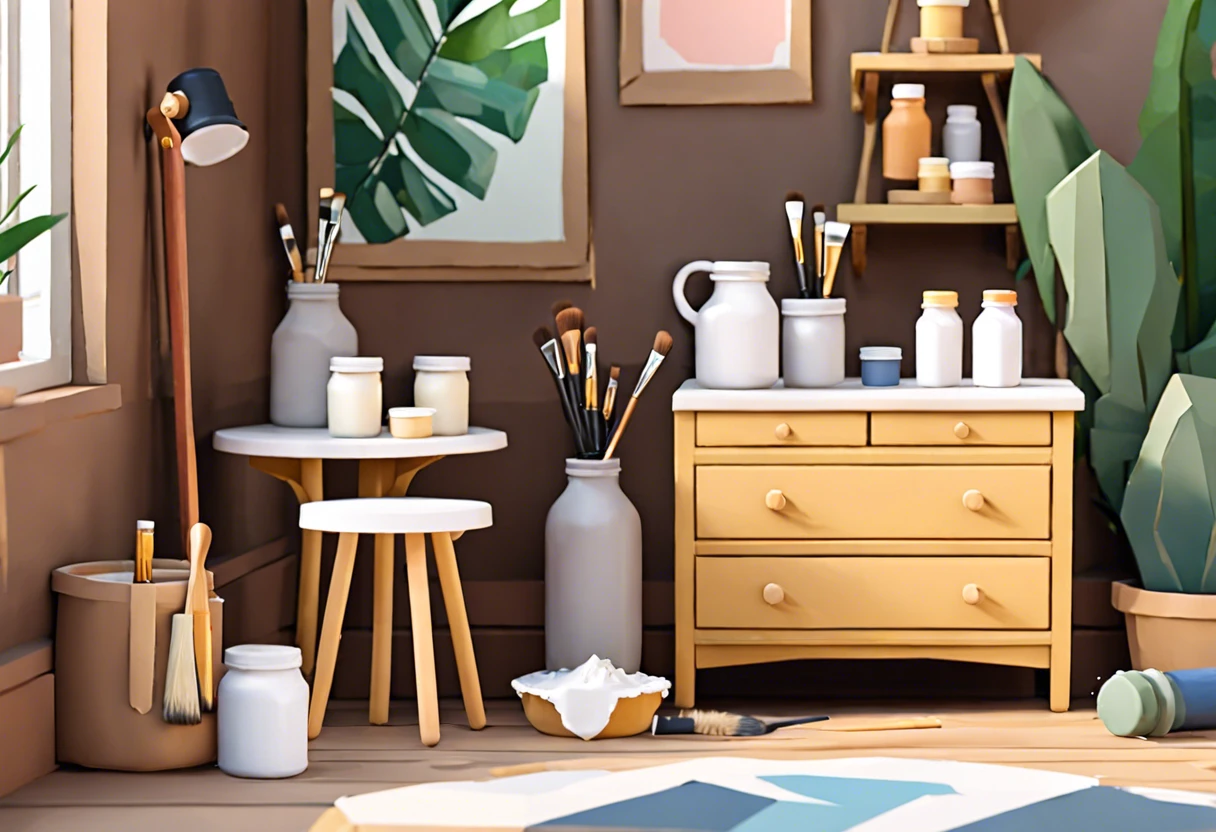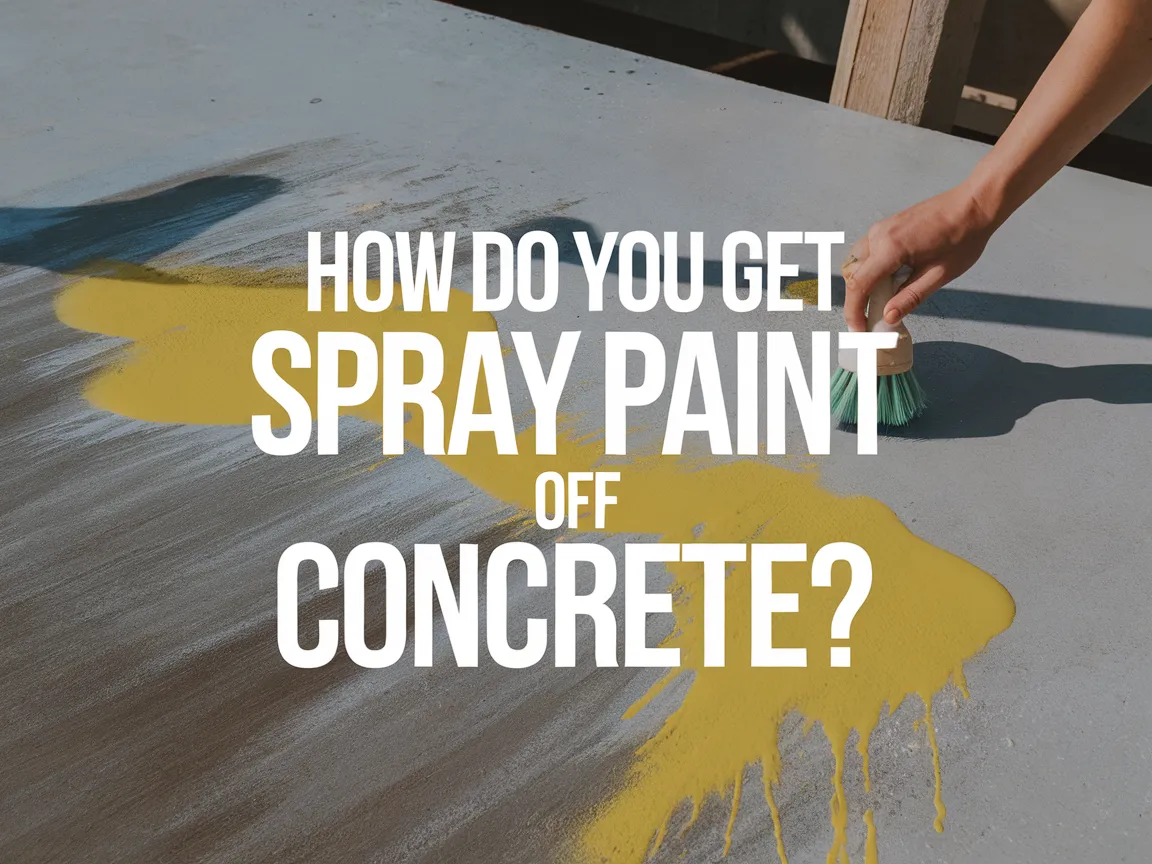What is Milk Paint Used for?
Published on: April 29, 2025 | Last Updated: January 7, 2025
Written By: Alisha Winters
Milk paint is a special kind of paint made from milk, lime, and natural pigments. Imagine a colorful potion that can make your wood furniture look super pretty!
So, what is milk paint used for? It’s really important because it helps you transform old furniture into something fresh and beautiful. Personally, I love using it for upcycling projects—it adds a unique charm to every piece!
In this guide, you’ll learn about the uses of milk paint, how to prepare and apply it, recommended color options, different application techniques, troubleshooting, and some creative DIY ideas. You’ll also discover tips on how to use milk paint effectively!
Contents
- 1 What is Milk Paint Used for?
- 2 What is ‘Milk Paint’?
- 3 Before You Start Using Milk Paint
- 4 Steps to Apply Milk Paint
- 5 Why Choose Milk Paint for Your Projects?
- 6 Unique Techniques With Milk Paint
- 7 Milk Paint vs. Traditional Paints
- 8 Types Of Milk Paint Applications
- 9 Common Issues When Using Milk Paint
- 10 Finishing Touches for Your Milk Paint Project
- 11 Creative DIY Project Ideas With Milk Paint
- 12 Creative Uses for Milk Paint Beyond Furniture
- 13 Comparison of Milk Paint with Other Natural Paints
- 14 Frequently Asked Questions About Milk Paint Usage
- 15 Conclusion
- 16 Useful Resources
What is Milk Paint Used for?
Milk paint is used for creating a matte finish on furniture, walls, and crafts. It’s eco-friendly and made from natural ingredients. Perfect for vintage looks, it easily adheres to many surfaces. You can also mix colors for customization! Artists like Bob Ross have long appreciated unique painting techniques that capture timeless aesthetics, much like the classic painting styles he mastered.
The Finishing Touch
A freshly painted wall is a blank canvas. The best way to bring your room to life is with a single piece of statement art that ties everything together.
Browse Wall Art at Big Wall DecorWhat is ‘Milk Paint’?
Milk paint is a natural, non-toxic paint made from simple ingredients. It typically consists of casein (Milk Protein), lime, clay, and natural pigments, creating a durable finish that’s safe for home interiors.
This unique paint has a rich history and a loyal following among DIY enthusiasts. I’ve explored various projects with it, witnessing its versatility in home decor.
A friend used it to revamp a worn-out dresser. Watching them mix the paint was fascinating; all it takes is water, milk, and pigment! Milky white and earthy tones cover furniture, breathing new life into any space with just a few coats. If you’re wondering what milk paint is used for, consider reviving old wood with its eco-friendly charm! When you want professional-looking touch-ups, art spray guns can transform your painting technique.
Before You Start Using Milk Paint
What do you need to get started?
- Milk Paint Powder: Use a brand like Old-Fashioned Milk Paint. It’s essential for making paint.
- Water: You’ll need about 1 cup (236 Ml) of water per mix. It combines with the powder to create paint.
- Mixing Container: A clean bucket or jar works best for mixing and storing your paint.
- Stirring Stick: A wooden stick or paddle is important for thorough blending. Consistency is key for even application.
- Protective Gear: Gather gloves and a mask, like a 3M P100 Respirator. Safety comes first when working with paints.
We’ve wrapped up the essential considerations for using milk paint here. Let us turn our attention to the application process.
Also See: Can You Melt Diamond Painting Beads? Find Out Here!

Steps to Apply Milk Paint
Here are the steps for using milk paint effectively for your projects.
The Finishing Touch
A freshly painted wall is a blank canvas. The best way to bring your room to life is with a single piece of statement art that ties everything together.
Browse Wall Art at Big Wall Decor-
Preparation and Surface Cleaning
Start by cleaning the surface thoroughly. Dust and grime can prevent milk paint from adhering properly, so use a damp cloth or sponge for best results.
If you’re painting furniture, remove any old finishes. Sanding helps create a suitable texture for better paint adhesion.
-
Mixing the Milk Paint
Combine milk paint powder with water in a mixing container. The typical ratio is 1 part paint to 1 part water, but adjust based on the desired thickness.
Stir thoroughly until fully blended; a whisk works wonders. Allow it to sit for about 10 minutes to let air bubbles rise, ensuring smooth application.
-
Applying the Milk Paint
Use a high-quality brush to apply the milk paint in long strokes. Work in sections for uniform coverage—2 to 3 thin layers are better than one thick one!
Between each layer, let it dry for about 30 minutes. Rushing this step can lead to an uneven finish!
-
Allowing Drying Time
After the last coat, allow the painted surface to dry completely. This usually takes 1-2 hours but can vary depending on humidity and heat.
Don’t skip this! Allow an additional curing time of 24 hours before using the item for best durability. Patience really pays off!
We covered the steps for applying milk paint here. We will now cover the reasons to choose milk paint for your projects.
Why Choose Milk Paint for Your Projects?
Milk paint offers unique benefits that make it a fantastic choice for various creative projects.
- Eco-Friendly: Made from natural ingredients, milk paint is safe for the environment. It helps reduce harmful chemicals in your home.
- Versatility: You can use it on wood, metal, and even fabric! This adaptability allows for exciting applications across different surfaces.
- Customizable: Easily mix colors and adjust consistency. Want a thin layer or a thick coating? You’ve got the control!
- Matte Finish: Enjoy that rustic, matte look! Milk paint dries to a beautiful finish that enhances texture.
- Easy Cleanup: You can clean up with just soap and water since it’s water-based. No need for harsh solvents!
That covers the benefits of milk paint for your projects. Let’s now take a look at unique techniques using milk paint.
Unique Techniques With Milk Paint
There are some creative techniques that’ll take your milk paint projects to the next level!
-
Color Washing
This technique involves diluting milk paint to create a translucent layer. It’s great for adding depth to surfaces while still showing the underlying texture.
-
Distressing
Scrape or sand surfaces to give a weathered look. It enhances character and vintage appeal, perfect for cottage-style decor!
-
Layering
Use different colors in layers for a unique “chippy” finish. Let layers dry before applying the next one for vibrant color play!
-
Stenciling
Create stunning designs by stenciling milk paint. It’s a fun way to personalize furniture and decor items.
We’ve wrapped up unique methods for using milk paint. Let us turn our attention to comparing milk paint and traditional paints.

Milk Paint vs. Traditional Paints
Here’s a quick comparison to help you decide if milk paint is right for your next project.
| Criteria | Milk Paint | Traditional Paint |
|---|---|---|
| Ingredients | Natural (casein, lime) | Synthetic (chemicals, solvents) |
| Odor | Minimal | Strong |
| Durability | Long-lasting but needs sealing | Highly durable |
| Finish | Matte, rustic | Varies (gloss, satin, etc.) |
| Cleanup | Soap and water | Solvents required |
Types Of Milk Paint Applications
Let’s explore the different types of milk paint applications: furniture finishing, wall painting, crafts, and decorative effects.
-
Furniture Finishing
Milk paint is perfect for furniture restoration. It adheres well to porous surfaces and comes in various colors, making it ideal for cabinets, tables, and chairs.
-
Wall Painting
You can use milk paint on walls for a rustic, matte finish. Since it’s made from natural ingredients, it’s less harmful than conventional paints.
-
Craft Projects
Milk paint works for various craft projects like decorative signs or kids’ crafts. Just mix it, and you’re ready to go!
-
Decorative Effects
For unique touches, milk paint allows techniques like washes or distressing. You can manipulate it for different textures and finishes.
Through years of practice, I’ve realized that furniture finishing showcases the beauty of milk paint. It highlights grain textures and allows easy touch-ups, making it my go-to choice for restoring charm to old pieces. When selecting the perfect paint color, I often explore different interior design techniques to enhance my furniture restoration projects.
Common Issues When Using Milk Paint
When my friend tried using milk paint on her kitchen table, she noticed the color wasn’t vibrant. This happened because she mixed in too much water—over 20% dilution can wash out the color.
To fix this, she should use a binder. Just mix more pigment into the paste before painting. It’s all about the right balance: aim for a 1:1 water ratio.
The Finishing Touch
A freshly painted wall is a blank canvas. The best way to bring your room to life is with a single piece of statement art that ties everything together.
Browse Wall Art at Big Wall DecorFinishing Touches for Your Milk Paint Project
After exploring what milk paint can do, focus on sealant options. Apply a topcoat such as natural wax or Union Oil Poly 80 g/L (10 Oz) for moisture-repellent properties.
Inspect the finish closely. Look for spots with uneven color coverage and touch them up using the original milk paint mix for accurate color matching.
An insider tip: For imperfect surfaces, sand with 220-grit (Fine) sandpaper after application to create a smooth finish and prepare it for the topcoat.
Creative DIY Project Ideas With Milk Paint
Ever thought about jazzing up your old furniture or creating a whimsical garden sign? Imagine transforming a basic skull planter into a vibrant piece or giving an old wooden chair a multi-colored makeover!
For these projects, I’d grab a few jars of milk paint—about three to four should do. It costs around $25-$30. You’ll need some brushes and sandpaper, which could run you another $10-$15. Set aside a few hours for prepping and painting, and you’re all set to unleash your creativity! If you’re curious about alternative painting techniques, baking painted salt dough offers an interesting creative approach.
If you’re looking to dive deeper, you might consider using milk paint on fabric, like turning an old T-shirt into a wearable art piece. Or, why not mix it with other ‘upcycled’ materials for a one-of-a-kind wall art deco? The sky’s the limit when it comes to what milk paint materials can do! When experimenting with different painting techniques, you might also want to explore painting techniques for air-dry clay.
Creative Uses for Milk Paint Beyond Furniture
Milk paint isn’t just for furniture. It can jazz up a variety of items! Let’s explore some unexpected applications.
-
Wall Murals
Want to liven up your space? Use milk paint for wall murals! The soft matte finish creates an inviting atmosphere.
-
Outdoor Decor
Give your garden a splash of color! Milk paint can brighten up pots, birdhouses, and fences. Just seal them to protect against the weather.
-
Textile Art
Ever thought about painting fabric? Milk paint can be applied to cotton or canvas. It’s a fun way to create one-of-a-kind tote bags or wall hangings!
-
Artistic Projects
Whether it’s on wood slices or canvas, use milk paint to create abstract art. The layering technique can generate stunning textures!
Comparison of Milk Paint with Other Natural Paints
Wanna know how milk paint stacks up against other natural paints? Check out this comparison!
| Paint Type | Base Ingredients | Finish Texture | Durability | Typical Use |
|---|---|---|---|---|
| Milk Paint | Casein, Lime, Natural Pigments | Matte, Rustic | Long-lasting, needs sealant | Furniture, Walls, Crafts |
| Clay Paint | Clay, Water, Natural Pigments | Matte | Moderately Durable | Interior Walls, Artistic Projects |
| Natural Oil Paint | Linseed Oil, Natural Resins | Semi-gloss to Glossy | Very Durable | Fine Furniture, Artwork |
Frequently Asked Questions About Milk Paint Usage
What Surfaces Can Milk Paint Be Used on?
Yes, milk paint can be used on a variety of surfaces like wood, concrete, and plaster. It works well because it adheres nicely and provides a durable finish, often lasting over five years when applied correctly.
Is Milk Paint Eco-friendly?
Yes, milk paint is eco-friendly. It’s made from natural ingredients, including casein (Milk Protein), which means it’s safe for both you and the environment.
Can Milk Paint Be Used Outdoors?
Yes, you can use milk paint outdoors, but you’ll need to seal it. Sealing milk paint protects it from moisture and UV rays, ensuring it remains vibrant and intact longer.
How Do I Seal Milk Paint?
To seal milk paint, use a water-based clear coat or wax. This coat adds a protective layer, enhancing durability while maintaining a beautiful finish. A good seal can often extend the life of your paint by 25%. When choosing the right finish, you might want to explore professional baseboards painting techniques.
Does Milk Paint Have a Strong Odor?
No, milk paint doesn’t have a strong odor. It’s made from natural materials and is low in VOCs (Volatile Organic Compounds), making it a great choice for indoor projects.
How Do You Make Milk Paint?
You can make milk paint by mixing milk protein with lime, clay, and natural pigments. The beauty is that you control the color and consistency, which creates a unique, handmade product tailored to your needs. If you’re curious about alternative wood painting techniques, burning painted wood requires careful consideration.
Can I Mix Milk Paint Colors?
Yes, you can mix milk paint colors. This is a fun way to customize your shades and get creative! Experimenting with colors lets you achieve those perfect tones that traditional paints might not offer. If you’re curious about unique color palettes, painted buntings inspire vibrant combinations.
How Long Does Milk Paint Last Once Mixed?
Once mixed, milk paint generally lasts up to a week. After that, it may begin to spoil because it contains perishable ingredients. Just mix what you need for your project to avoid waste.
Is Milk Paint More Expensive Than Regular Paint?
Milk paint can be slightly more expensive than regular paint, averaging about $20 per quart. However, its durability and eco-friendly properties may make it worth the investment over time.
Also See: Can Anodized Aluminum Be Painted? Quick Tips
Conclusion
Phew, that’s a lot of ground we’ve covered. We discussed what milk paint is, how to use it, steps for application, color palettes, different applications, factors that affect its use, common issues, finishing touches, and creative DIY project ideas.
Hopefully, I was able to impart some of my experience on what milk paint is used for and how it can transform furniture, artwork, and various surfaces with its vibrant colors and unique finishes.
For further insights and resources, be sure to check out our homepage: Paint Answers for all the information you need!
Useful Resources
- Smith, R. (2003). The Artist’s Handbook of Materials and Techniques (5th ed.). New York, NY: Knopf.
- All About Milk Paint – This Old House
- What is milk paint? And how to use it in your home | Homes & Gardens
- Milk Paint: Organic Non-Toxic Paint and Other Products | RMP Co™
Experienced interior designer with 15+ years in transforming spaces, blending artistry with expertise in color and design. Rhode Island School of Design graduate, specializing in restorations and modern makeovers.
Material, Wood









